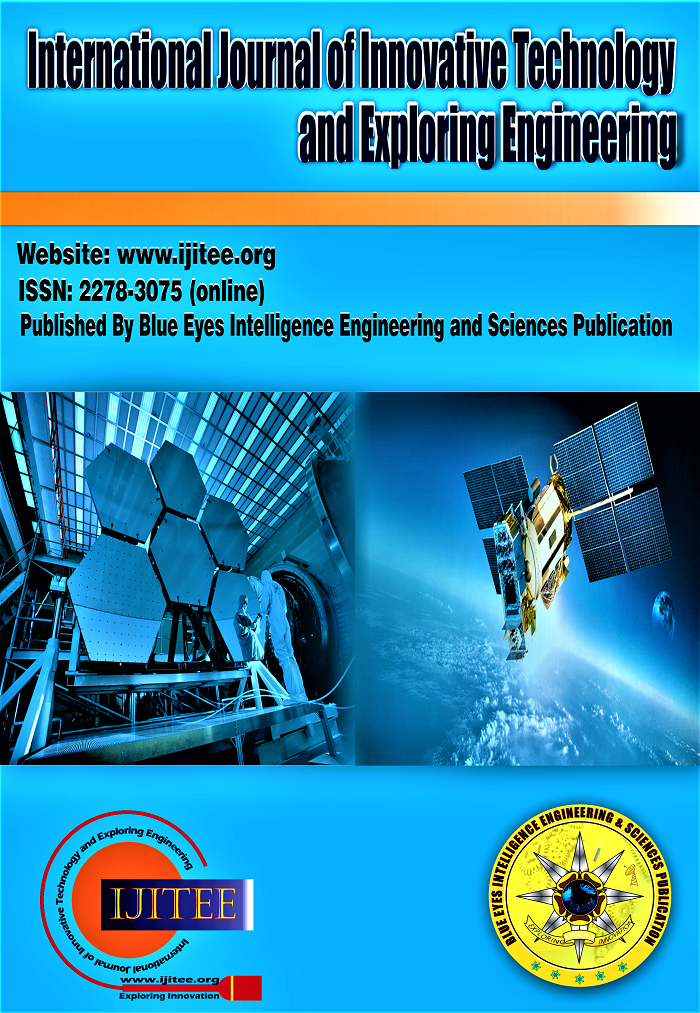Comparison of Various Deep Learning Models Used to Detect and Classify Keratoconus Disease
Main Article Content
Abstract
The corneal condition keratoconus results in both corneal thinning and bulging, along with symptoms like astigmatism, light sensitivity, blurred vision, etc. Your eyes can be impacted by genetic, environmental, and ageing-related problems because they are one of the most complicated organs in the human body. From little discomfort to more serious vision problems that could harm your eyesight, this can happen. The screening for keratoconus necessitates a thorough examination of the cornea using a variety of methods, including slip lamp analysis and corneal tomography. The goal of the study is to identify and categorize keratoconus using a variety of machine-learning methods.
Downloads
Article Details
Section

This work is licensed under a Creative Commons Attribution-NonCommercial-NoDerivatives 4.0 International License.
How to Cite
References
Kamiya K, Ayatsuka Y, Kato Y, et al, Keratoconus detection using deep learning of colour-coded maps with anterior segment optical coherence tomography: a diagnostic accuracy study BMJ Open 2019;9:e031313. doi: 10.1136/bmjopen-2019- 031313
Fatemeh Toutounchian, Jamshid Shanbehzadeh, Mehdi Khanlari, Detection of Keratoconus and Suspect Keratoconus by Machine Vision.
International Multiconference of Engineers and Computer Scientists 2012 Vol I, IMECS 2012 ISBN: 978-988-19251-1-4
KeratoDetect: Keratoconus Detection Algorithm Using Convolutional Neural Networks Alexandru Lavric, Popa Valentin Comput Intell Neurosci. 2019; 2019: 8162567. Published online 2019 Jan 23. doi: 10.1155/2019/8162567 PMCID: PMC6364125.
Shajari, M.; Jaffary, I.; Herrmann, K.; Grunwald, C.; Steinwender, G.; Mayer, W.J.; Kohnen, T. Early tomographic changes in the eyes of patients with keratoconus. J. Refract. Surg., 34, 254–259.
Keratoconus severity identification using unsupervised machine learning Siamak Yousefi, Ebrahim Yousefi, Hidenori Takahashi, Takahiko Hayashi, Hironobu Tampo, Satoru Inoda, Yusuke Arai, Penny Asbel
V. Galvis, T. Sherwin, A. Tello, J. Merayo, R. Barrera, and A. Acera, “Keratoconus: an inflammatory disorder?” Nature Eye, vol. 29, no. 7, pp. 843–859, 2015.
H. A. Salmon, D. Chalk, K. Stein, and N. A. Frost, “Cost effectiveness of collagen crosslinking for progressive keratoconus in the UK NHS,” Nature Eye, vol. 29, no. 11, pp. 1504–1511, 2015.
I. R. Hidalgo, P. Rodriguez, J. J. Rozema et al., “Evaluation of a machine-learning classifier for keratoconus detection based on Scheimpflug tomography,” Cornea, vol. 35, no. 6, pp. 827– 832, 2016.
A. Accardo and S. Pensiero, “Neural network-based system for early keratoconus detection from corneal topography,” Journal of biomedical informatics, vol. 35, no. 3, pp. 151–159, 2002.
M. A. Valdés-Mas, “A new approach based on Machine Learning for predicting corneal curvature (K1) and astigmatism in patients with keratoconus after intracorneal ring implantation,” Computer Methods and Programs in Biomedicine, vol. 116, no. 1, pp. 39–47, 2014.
Lee, P. Taylor, J. Kalpathy-Cramer, and A. Tufail, “Machine learning has arrived!” Ophthalmology, vol. 124, no. 12, pp. 1726–1728.
F. Toutounchian, J. Shanbehzadeh, and M. Khanlari, “Detection of keratoconus and suspect keratoconus by machine vision,” in Proceedings of the International MultiConference of Engineers and Computer Scientists, Hong Kong, China, March 2012.
M. W. Belin and S. S. Khachikian, “An introduction to understanding elevation‐based topography: how elevation data are displayed–a review,” Clinical & Experimental Ophthalmology, vol. 37, no. 1, pp. 14–29, 2009.
A. G. Bors and I. Pitas, “Median radial basis function neural network,” IEEE Transactions on Neural Networks, vol. 7, no. 6, pp. 1351–1364, 1996.
N. N.S and S. A, “Malware Detection using Deep Learning Methods,” International Journal of Innovative Science and Modern Engineering, vol. 6, no. 6. Blue Eyes Intelligence Engineering and Sciences Engineering and Sciences Publication - BEIESP, pp. 6–9, Apr. 15, 2020. doi: 10.35940/ijisme.f1218.046620. Available: http://dx.doi.org/10.35940/ijisme.F1218.046620
T. A.* and M. C., “A Survey on Deep Learning Architectures and Frameworks for Cancer Detection in Medical Images Analysis,” International Journal of Innovative Technology and Exploring Engineering, vol. 9, no. 11. Blue Eyes Intelligence Engineering and Sciences Engineering and Sciences Publication - BEIESP, pp. 28–34, Sep. 30, 2020. doi: 10.35940/ijitee.k7654.0991120. Available: http://dx.doi.org/10.35940/ijitee.K7654.0991120
P. Kanani* and Dr. M. Padole, “Deep Learning to Detect Skin Cancer using Google Colab,” International Journal of Engineering and Advanced Technology, vol. 8, no. 6. Blue Eyes Intelligence Engineering and Sciences Engineering and Sciences Publication - BEIESP, pp. 2176–2183, Aug. 30, 2019. doi: 10.35940/ijeat.f8587.088619. Available: http://dx.doi.org/10.35940/ijeat.F8587.088619
A. K* and K. H K, “Handwriting Recognition using Deep Learning based Convolutional Neural Network,” International Journal of Recent Technology and Engineering (IJRTE), vol. 8, no. 4. Blue Eyes Intelligence Engineering and Sciences Engineering and Sciences Publication - BEIESP, pp. 4826–4828, Nov. 30, 2019. doi: 10.35940/ijrte.d7811.118419. Available: http://dx.doi.org/10.35940/ijrte.D7811.118419
Wanjau, S. K., Wambugu, G. M., & Oirere, A. M. (2022). Network Intrusion Detection Systems: A Systematic Literature Review of Hybrid Deep Learning Approaches. In International Journal of Emerging Science and Engineering (Vol. 10, Issue 7, pp. 1–16). Blue Eyes Intelligence Engineering and Sciences Engineering and Sciences Publication - BEIESP. https://doi.org/10.35940/ijese.f2530.0610722





